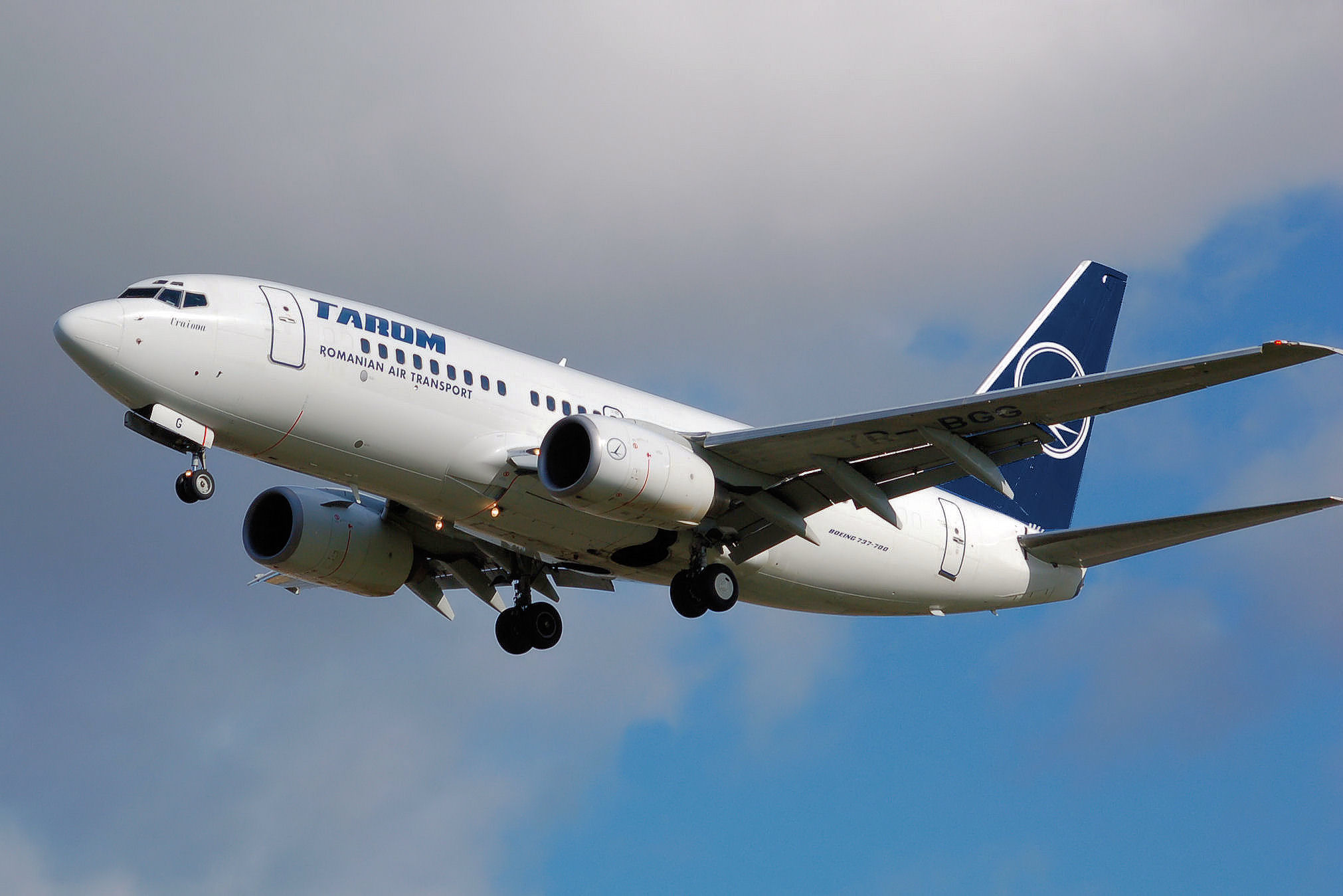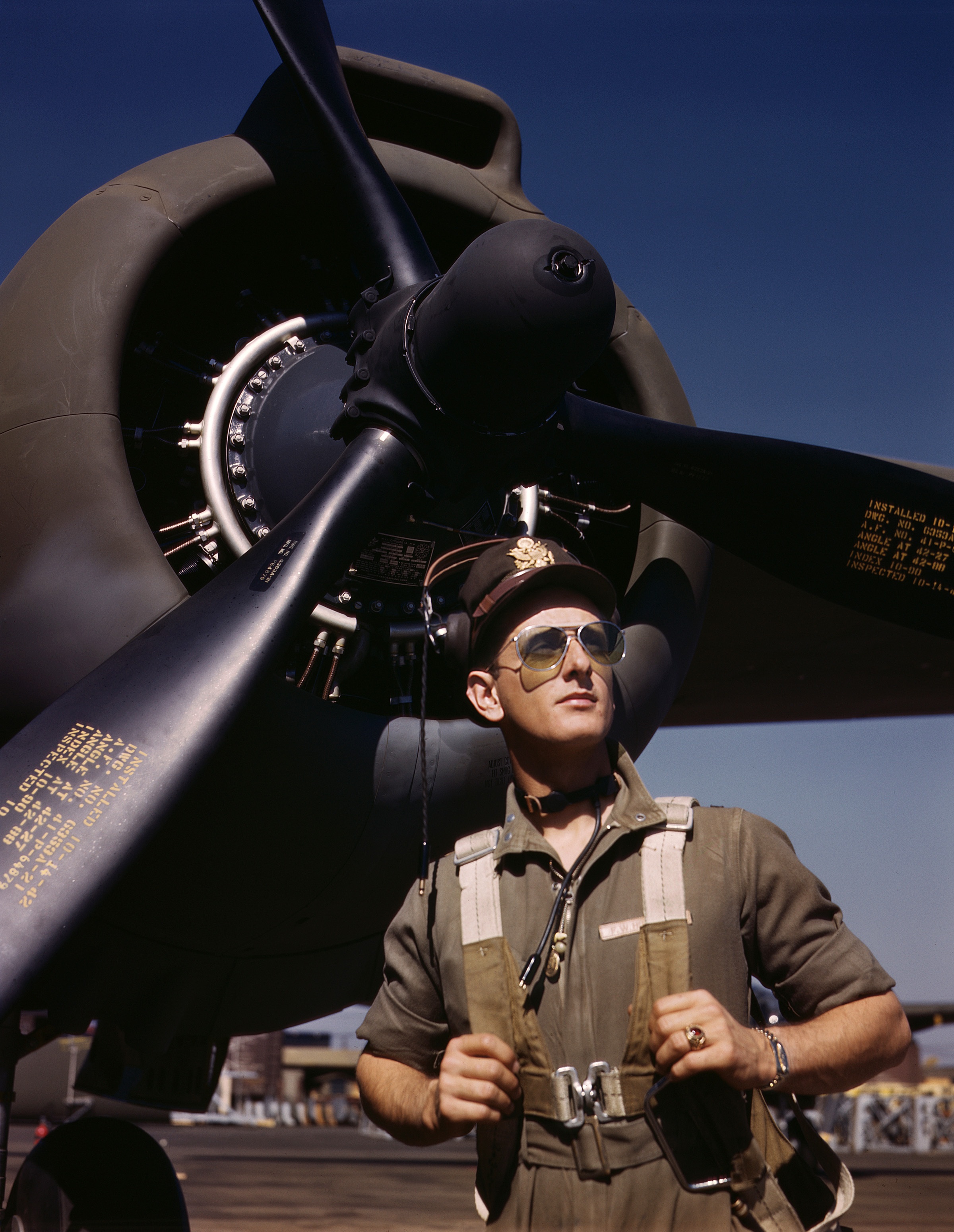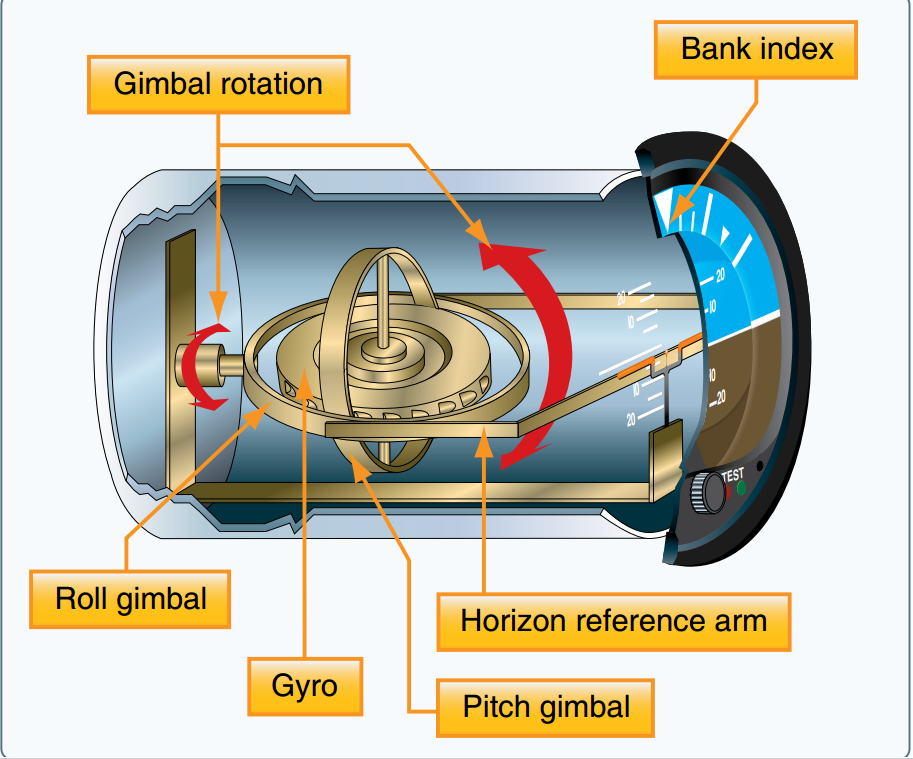|
Steep Turn (aviation)
A steep turn in aviation, performed by an aircraft (usually fixed wing), is a turn that involves a bank of more than 30 degrees. This means the angle created by the axis running along both wings and the horizon is more than 30 degrees. Generally, for training purposes, steep turns are demonstrated and practiced at 45 degrees, sometimes more. The purpose of learning and practicing a steep turn is to train a pilot to maintain control of an aircraft in cases of emergency such as structural damage, loss of power in one engine etc. Entry procedure for a steep turn involves putting the aircraft into a bank (left or right), simultaneously increasing the thrust adequately to maintain altitude, while pulling back on the flight stick or flight yoke to speed up the turning process. For Jet training an increase of 7-8% of N1 caters. While doing this the pilot has to ensure no loss or gain of altitude. The pilot is expected to constantly look outside the aircraft while keeping a close check ... [...More Info...] [...Related Items...] OR: [Wikipedia] [Google] [Baidu] |
Aviation
Aviation includes the activities surrounding mechanical flight and the aircraft industry. ''Aircraft'' includes fixed-wing and rotary-wing types, morphable wings, wing-less lifting bodies, as well as lighter-than-air craft such as hot air balloons and airships. Aviation began in the 18th century with the development of the hot air balloon, an apparatus capable of atmospheric displacement through buoyancy. Some of the most significant advancements in aviation technology came with the controlled gliding flying of Otto Lilienthal in 1896; then a large step in significance came with the construction of the first powered airplane by the Wright brothers in the early 1900s. Since that time, aviation has been technologically revolutionized by the introduction of the jet which permitted a major form of transport throughout the world. Etymology The word ''aviation'' was coined by the French writer and former naval officer Gabriel La Landelle in 1863. He derived the term from ... [...More Info...] [...Related Items...] OR: [Wikipedia] [Google] [Baidu] |
Fixed-wing Aircraft
A fixed-wing aircraft is a heavier-than-air Aircraft, flying machine, such as an airplane, which is capable of flight using wings that generate Lift (force), lift caused by the aircraft's forward airspeed and the wing configuration, shape of the wings. Fixed-wing aircraft are distinct from rotorcraft, rotary-wing aircraft (in which the wings form a Helicopter rotor, rotor mounted on a spinning shaft or "mast"), and ornithopters (in which the wings bird flight#Flapping flight, flap in a manner similar to that of a bird). The wings of a fixed-wing aircraft are not necessarily rigid; kites, hang gliders, variable-sweep wing aircraft and airplanes that use wing morphing are all examples of fixed-wing aircraft. Gliding flight, Gliding fixed-wing aircraft, including free-flying Glider (aircraft), gliders of various kinds and tethered kites, can use moving air to gain altitude. Powered aircraft, Powered fixed-wing aircraft (airplanes) that gain forward thrust from an aircraft engine, ... [...More Info...] [...Related Items...] OR: [Wikipedia] [Google] [Baidu] |
Banked Turn
A banked turn (or banking turn) is a turn or change of direction in which the vehicle banks or inclines, usually towards the inside of the turn. For a road or railroad this is usually due to the roadbed having a transverse down-slope towards the inside of the curve. The bank angle is the angle at which the vehicle is inclined about its longitudinal axis with respect to the horizontal. Turn on flat surfaces If the bank angle is zero, the surface is flat and the normal force is vertically upward. The only force keeping the vehicle turning on its path is friction, or traction. This must be large enough to provide the centripetal force, a relationship that can be expressed as an inequality, assuming the car is driving in a circle of radius ''r'': :\mu mg > . The expression on the right hand side is the centripetal acceleration multiplied by mass, the force required to turn the vehicle. The left hand side is the maximum frictional force, which equals the coefficient of frictio ... [...More Info...] [...Related Items...] OR: [Wikipedia] [Google] [Baidu] |
Pilot (aeronautics)
An aircraft pilot or aviator is a person who controls the flight of an aircraft by operating its directional flight controls. Some other aircrew members, such as navigators or flight engineers, are also considered aviators, because they are involved in operating the aircraft's navigation and engine systems. Other aircrew members, such as drone operators, flight attendants, mechanics and ground crew, are not classified as aviators. In recognition of the pilots' qualifications and responsibilities, most militaries and many airlines worldwide award aviator badges to their pilots. History The first recorded use of the term ''aviator'' (''aviateur'' in French) was in 1887, as a variation of ''aviation'', from the Latin ''avis'' (meaning ''bird''), coined in 1863 by in ''Aviation Ou Navigation Aérienne'' ("Aviation or Air Navigation"). The term ''aviatrix'' (''aviatrice'' in French), now archaic, was formerly used for a female aviator. These terms were used more in the ea ... [...More Info...] [...Related Items...] OR: [Wikipedia] [Google] [Baidu] |
Thrust
Thrust is a reaction force In physics, a force is an influence that can change the motion of an object. A force can cause an object with mass to change its velocity (e.g. moving from a state of rest), i.e., to accelerate. Force can also be described intuitively as a p ... described quantitatively by Newton's third law. When a system expels or accelerates mass in one direction, the accelerated mass will cause a force of equal magnitude but opposite direction to be applied to that system. The force applied on a surface in a direction perpendicular or normal vector, normal to the surface is also called thrust. Force, and thus thrust, is measured using the International System of Units (SI) in newton (unit), newtons (symbol: N), and represents the amount needed to accelerate 1 kilogram of mass at the rate of 1 Metre per second squared, meter per second per second. In mechanical engineering, force orthogonal to the main load (such as in parallel helical gears) is referre ... [...More Info...] [...Related Items...] OR: [Wikipedia] [Google] [Baidu] |
Altitude
Altitude or height (also sometimes known as depth) is a distance measurement, usually in the vertical or "up" direction, between a reference datum and a point or object. The exact definition and reference datum varies according to the context (e.g., aviation, geometry, geographical survey, sport, or atmospheric pressure). Although the term ''altitude'' is commonly used to mean the height above sea level of a location, in geography the term elevation is often preferred for this usage. Vertical distance measurements in the "down" direction are commonly referred to as depth. In aviation In aviation, the term altitude can have several meanings, and is always qualified by explicitly adding a modifier (e.g. "true altitude"), or implicitly through the context of the communication. Parties exchanging altitude information must be clear which definition is being used. Aviation altitude is measured using either mean sea level (MSL) or local ground level (above ground leve ... [...More Info...] [...Related Items...] OR: [Wikipedia] [Google] [Baidu] |
Flight Yoke
A yoke, alternatively known as a control wheel or a control column, is a device used for piloting some fixed-wing aircraft.Crane, Dale: ''Dictionary of Aeronautical Terms, third edition'', page 563. Aviation Supplies & Academics, 1997. . The pilot uses the yoke to control the attitude of the plane, usually in both pitch and roll. Rotating the control wheel controls the ailerons and the roll axis. Fore and aft movement of the control column controls the elevator and the pitch axis. When the yoke is pulled back, the nose of the aircraft rises. When the yoke is pushed forward, the nose is lowered. When the yoke is turned left, the plane rolls to the left, and when it is turned to the right, the plane rolls to the right. Small to medium-size aircraft, usually limited to propeller-driven, feature a mechanical system whereby the yoke is connected directly to the control surfaces with cables and rods. Human muscle power alone is not enough for larger and more powerful aircraft, ... [...More Info...] [...Related Items...] OR: [Wikipedia] [Google] [Baidu] |
Attitude Indicator
The attitude indicator (AI), formerly known as the gyro horizon or artificial horizon, is a flight instrument that informs the pilot of the aircraft orientation relative to Earth's horizon, and gives an immediate indication of the smallest orientation change. The miniature aircraft and horizon bar mimic the relationship of the aircraft relative to the actual horizon. It is a primary instrument for flight in instrument meteorological conditions. Attitude is always presented to users in the unit degrees (°). However, inner workings such as sensors, data and calculations may use a mix of degrees and radians, as scientists and engineers may prefer to work with radians. History Before the advent of aviation, artificial horizons were used in celestial navigation. Proposals of such devices based on gyroscopes, or spinning tops, date back to the 1740ies. Later implementations, also known as ''bubble horizons'', were based on bubble levels and attached to a sextant. In the 2010s, ... [...More Info...] [...Related Items...] OR: [Wikipedia] [Google] [Baidu] |
Centrifugal Force
In Newtonian mechanics, the centrifugal force is an inertial force (also called a "fictitious" or "pseudo" force) that appears to act on all objects when viewed in a rotating frame of reference. It is directed away from an axis which is parallel to the axis of rotation and passing through the coordinate system's origin. If the axis of rotation passes through the coordinate system's origin, the centrifugal force is directed radially outwards from that axis. The magnitude of centrifugal force ''F'' on an object of mass ''m'' at the distance ''r'' from the origin of a frame of reference rotating with angular velocity is: F = m\omega^2 r The concept of centrifugal force can be applied in rotating devices, such as centrifuges, centrifugal pumps, centrifugal governors, and centrifugal clutches, and in centrifugal railways, planetary orbits and banked curves, when they are analyzed in a rotating coordinate system. Confusingly, the term has sometimes also been used for the rea ... [...More Info...] [...Related Items...] OR: [Wikipedia] [Google] [Baidu] |
Aircraft
An aircraft is a vehicle that is able to fly by gaining support from the air. It counters the force of gravity by using either static lift or by using the dynamic lift of an airfoil, or in a few cases the downward thrust from jet engines. Common examples of aircraft include airplanes, helicopters, airships (including blimps), Glider (aircraft), gliders, Powered paragliding, paramotors, and hot air balloons. The human activity that surrounds aircraft is called ''aviation''. The science of aviation, including designing and building aircraft, is called ''aeronautics.'' Aircrew, Crewed aircraft are flown by an onboard Aircraft pilot, pilot, but unmanned aerial vehicles may be remotely controlled or self-controlled by onboard computers. Aircraft may be classified by different criteria, such as lift type, Powered aircraft#Methods of propulsion, aircraft propulsion, usage and others. History Flying model craft and stories of manned flight go back many centuries; however, t ... [...More Info...] [...Related Items...] OR: [Wikipedia] [Google] [Baidu] |
Lift-induced Drag
In aerodynamics, lift-induced drag, induced drag, vortex drag, or sometimes drag due to lift, is an aerodynamic drag force that occurs whenever a moving object redirects the airflow coming at it. This drag force occurs in airplanes due to wings or a lifting body redirecting air to cause lift and also in cars with airfoil wings that redirect air to cause a downforce. It is symbolized as D_\text, and the ''lift-induced drag coefficient'' as C_. For a constant amount of lift, induced drag can be reduced by increasing airspeed. A counter-intuitive effect of this is that, up to the speed-for-minimum-drag, aircraft need less power to fly faster. Induced drag is also reduced when the wingspan is higher, or for wings with wingtip devices. Explanation The total aerodynamic force acting on a body is usually thought of as having two components, lift and drag. By definition, the component of force parallel to the oncoming flow is called drag; and the component perpendicular to the oncomin ... [...More Info...] [...Related Items...] OR: [Wikipedia] [Google] [Baidu] |







